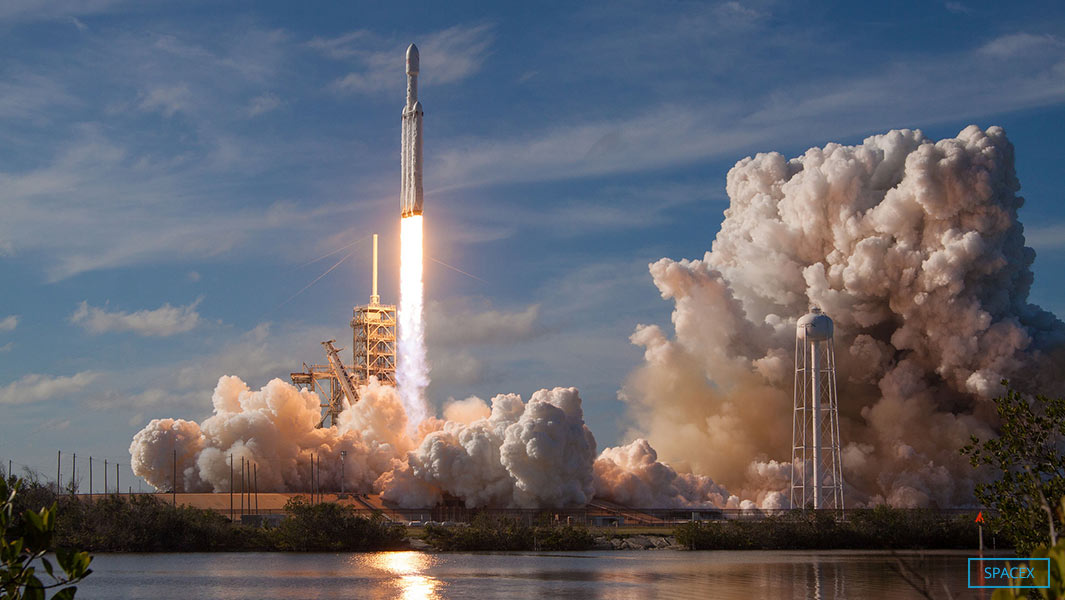Why SpaceX’s Falcon Heavy isn’t the only record-breaking rocket launched this month

2018 has already been a big year for space records.
The record breaking started at 2:03 p.m. (JST; 5:03 a.m. GMT) on Saturday 3 February when a rocket about as tall as a lamp post, and not a lot thicker, blasted off from the Uchinoura Space Centre in Kagoshima Prefecture, Japan.
It shot up like a firework before vanishing out of sight, leaving only a trail of wispy white smoke leading back to its launchpad on the cliffs above the Pacific Ocean.
This rocket was the Japanese Space Agency’s SS-520 No.5, the latest in a series of rockets designed to loft shoebox-sized micro-satellites into orbit, and the second to carry an orbital payload – in the form of the TRICOM-1R satellite.
The earlier SS-520 No.4 had failed shortly after launch, destroying the original TRICOM satellite with it.
A few minutes after SS-520 No.5 launched, mission control received confirmation that TRICOM-1R had been deployed into its intended orbit.
This meant that SS-520 No. 5, which weighed in at a mere 2.6 tonnes (5,732 lb) and stood only 9.54 m (31 ft 3.5 in) tall, was now the Smallest rocket to achieve orbit.
Meanwhile, on the other side of the world, SpaceX technicians were carrying out their final checks on a very different rocket.
At 12:30 p.m. (EST; 5:30 p.m. GMT) the previous day, the Falcon Heavy had fired its rockets for the first time and, to the surprise of many, didn’t explode. This meant that the 70-m-tall (229 ft 6 in), 1,420-tonne (3,125,735-lb) rocket was go for launch.
After another few days of checks and tests, the Falcon Heavy’s 27 Merlin rocket engines were finally lit at 3:45 p.m. (EST; 8:45 p.m. GMT) on Tuesday 6 February. On lift-off, the engines generated a staggering 22,819 kiloNewtons (5.13 million pounds-force) of thrust – around 18 times more power than a jumbo jet.

This makes the Falcon Heavy the Most powerful rocket by thrust (current), and puts it in the top five most powerful rockets ever. It is also the Most powerful rocket - lift capacity (current), capable of lifting 63.8 tonnes (140,654 lb) to low earth orbit.
This means you could use it to put an M1A2 Abrams tank – which at 63 tonnes (138,891 lb) is the Heaviest tank (current) – in space, if you wanted to.
After 2 minutes 34 seconds, the Falcon Heavy's two side boosters were jettisoned while the core stage kept going, now accelerating rapidly past 7,000 km/h (4,349 mph). Around eight minutes after lift-off the two side boosters made a neat synchronised landing at Cape Canaveral.
The core booster came down 30 seconds later, but sadly made a less neat "landing" about 100 metres away from the drone-ship landing pad, hitting the water at around 480 km/h (300 mph) and then exploding.
While the boosters were doing their thing, the Falcon Heavy's cargo – SpaceX founder Elon Musk's own Tesla Roadster – made history by becoming the First mass-produced car in space (not a record we'd ever expected to see).
Furthermore, as it accelerated away from our planet it reached a speed of 40,140 km/h (24,941 mph) relative to Earth, beating the record for Fastest car (in space) which had stood at 37,567 km/h (23,343 mph) since Apollo 16's lunar rover flew to the moon.
In the following months and years, Elon Musk's Tesla will continue to set records. According to Dr Jonathan McDowell of the Harvard–Smithsonian Center for Astrophysics, on its comet-like plunge through the sun's gravitational well, it may well set an even faster speed record of 118,800 km/h (73,818 mph).
Right now, the Tesla is somewhere out beyond the moon, being watched by curious astronomers around the world.
#Tesla#Roadster is flying across the stars. #Starman#FalconHeavy#ElonMusk#TeslaInSpace#TeslaRoadster@elonmusk@Tesla@TeslaMotorsClub
— Virtual Telescope (@VirtualTelescop) February 8, 2018
more: https://t.co/Ss8GXnsbAppic.twitter.com/4YHgQSqVbX


